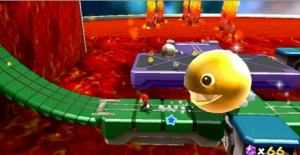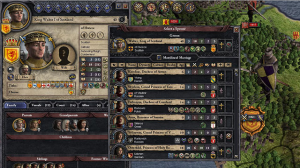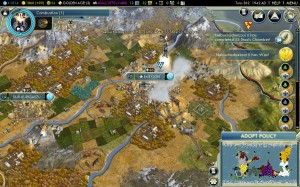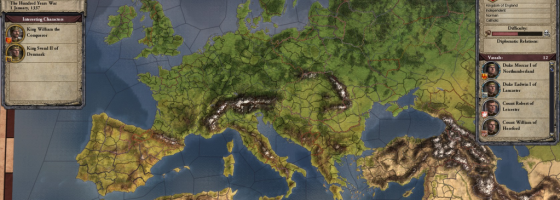Trying to play through the open world zombie game of State of Decay has left me feeling frustrated. As with most open ended games, the developers drop you into the world and expect you to learn everything at once with a minimal tutorial. State of Decay for me runs into the same problem that most strategy games or open ended games suffer from: Understanding how to teach someone to play.
The Hierarchy of Game Design:
For this post we’re going to use the term tutorial flow as the path someone takes to learning a game or how the game’s mechanics are introduced.
The tutorial flow and the difficulty curve of a game usually go hand in hand as a harder a game becomes usually means the player will need to understand the mechanics better to win. In most single system games or where there is only one set of mechanics for the player to learn, the tutorial flow is built into both the process of playing and the level structure.
It’s design 101 to introduce the mechanics of the game in order of complexity to give the player a chance to walk before they can run. Companies like Valve and Nintendo pretty much made a name for themselves with their game design by using this model.
Both companies like to make use of passive tutorials or learning by doing to teach someone their mechanics. If you ever watched a documentary from Valve on any of their single player games, they talked about how mechanics and new rules are introduced in a specific order to give the player a chance to learn something in a safe environment, then something harder before the player is put to the test without any safety nets to help them.
Nintendo builds their tutorials in essence into their level designs. With the Mario Galaxy series, the levels can be played in several ways based on the player’s own skill level. The normal path through the starting levels can be accomplished by simply using Mario’s basic jumping ability. However expert players can use Mario’s more advanced abilities to make their own shortcuts through and be rewarded for it.
That way the expert player doesn’t feel like they are jumping through hoops before they get to the challenging stuff and the new players don’t feel like they’re being thrown straight into the fry pan. Eventually, the advanced moves that started out as shortcuts would become required in the later levels at a point where someone would not be considered new at the game.

Nintendo’s level design in the recent Mario games was designed to allow both novice and expert players experience the levels differently based on their skill levels.
While this kind of design works for Nintendo and Valve, it falls apart when we talk about games built on multiple systems of design: Strategy games, niche titles, open world games and so on.
When your title is about giving the player a huge amount of choices and systems from the get-go, a normal tutorial doesn’t work.
The Problems with Freedom to Learn:
The issue is that showing someone how each system works in a vacuum is not the same as actually playing the game. And when you’re playing a game where these systems can be used for different long term affects at any time, it’s very hard to convey all that into a ten minute tutorial.
Another problem is that the use of said systems isn’t arbitrary or linear actions during the game. They can be required at anytime with their functionality interconnected. You can’t just tell the player to use these systems in order of X, Y and Z because who knows how the game will play out and when the player will need to make use of these different systems.
What’s worse is when you try to introduce freedom into the tutorial part of your game as State of Decay did. After the first small section that acts a basic tutorial for the first 10 minutes of play, your journey takes you into the first town and opens the game space dramatically. However while the game gives you freedom to explore to your heart’s content, it still has things to teach you if you follow the main story.
But when you give the player freedom to explore, what ends up happening is that they’ll do just that and at the same time may not follow the remainder of your tutorial. And best of all, the town is where State of Decay’s complex systems of managing bases, followers and supplies appear.
We need to figure out a better way of teaching someone as there are plenty of great games out there that could be enjoyed by more people if they were easier to learn without having to dumb them down. And I have a possible solution that comes from basic human nature.
Needing A Good Tutorial:
My idea comes from a popular psychological theory known as Maslow’s Hierarchy of Needs. The theory was an attempt at explaining how the motivation’s of someone grows and changes. The general idea was that the needs of an individual become more personal and self fulfilling as their basic needs are met. And that in order for someone to become a better person or grow, they need to be in an environment that satisfies the basic needs first.
Someone is not going to care about paying the bills to keep their cable when they don’t have enough food to feed themselves for example. To use this for tutorial design, there are two areas that designers can improve their tutorials on.
First is the order of which mechanics are introduced. Earlier we talked about how companies like Valve and Nintendo build their tutorials directly into the level design to make the player learn as they go. There is another side to this type of thought and it is teaching the player in order of importance or what the player needs to know to figure out the game.
You’re not going to start the player learning how to wall jump before they even start moving the character and once again this is where the “walk before you can run” expression comes into play.

While a game like Crusader Kings 2 just dumps the player into the deep end from the word go, with multiple screens, information and mechanics to learn.
While single system games are pretty simple to build their designs around, it’s the multi-system ones that we want to focus on.
The best way in a multi-system game to explain it to the player is not by order of complexity, but order of importance.
If you’ve ever watched any let’s plays on strategy games or 4X games, the person will explain things in order of what the player needs to know first. This could be anything from general troop movement to setting up diplomacy policies. By building a tutorial around the actual flow of a game as opposed to in a vacuum, it makes it easier to learn.
Now, another advantage of let’s plays compared to basic tutorials is that they offer the second part of a good tutorial. Let’s plays not only show the player what the mechanics are, but walk them through their importance to the game.
What to Teach:
A good tutorial should explain the following for every important mechanic or system in the game: what is it, how does it work and why should you do it.
Going back to Mario Galaxy for a second we can use this for any of Mario’s abilities:
Wall Jump: Allows Mario to jump off a wall, used by pressing A while in mid air as Mario hits a wall. The player should use this when they want to use a wall as a means to get extra height.
The problem with tutorials of open ended games is that they just focus on the what and the how but not the why. Understanding why you should perform an action is the most important part as it allows you to start figuring out how the different systems are connected.
Telling someone how to adjust an economic slider is great, but if the player doesn’t understand that they need to do this when they either need more troops or to make their people happy then what was the point of the lesson?
On our podcast last week, guest Iain Compton made a really good point about tutorial flow in more complex titles. He suggested that instead of just dumping all the information onto the player in the first ten minutes, figure out how to space out your tutorials for when they are needed by the player.
For example, if military actions aren’t needed from the beginning, then walk the player through economic systems until a fight breaks out. That way the player can focus on the most pressing matters first while building their understanding of the systems at play.

The challenge of tutorial design comes in when having to explain to someone the multiple connected systems of a strategy game.
Or the other way of doing this is to limit systems or functionality until the player understands the basics. On the cast last week we brought up Kerbal Space Program as a good example.
Right now the sandbox mode just gives the player every piece of equipment from the start. However it’s simply information overload as a new player wouldn’t know where to start out with rocket building.
With the campaign mode being developed, hopefully this will allow someone to learn the basics of the title using the bare minimum parts, before getting their hands on everything.
Working your way up:
Good tutorial design is a much underrated topic when it comes to developing a game as the designers are already completely involved with the game mechanics, which makes it hard to look at the game through the eyes of a novice.
The first step should always be examining the basic structure of playing your game and building the tutorial around it. While developers like Paradox have made a name for themselves with great games like Crusader Kings 2, they could be doing so much more if they spend the time providing adequate tutorials, as opposed to information dumping.
While a great tutorial may not be as important as well designed mechanics, it can be the difference of having just a moderate success and dramatically increasing your fan base.

